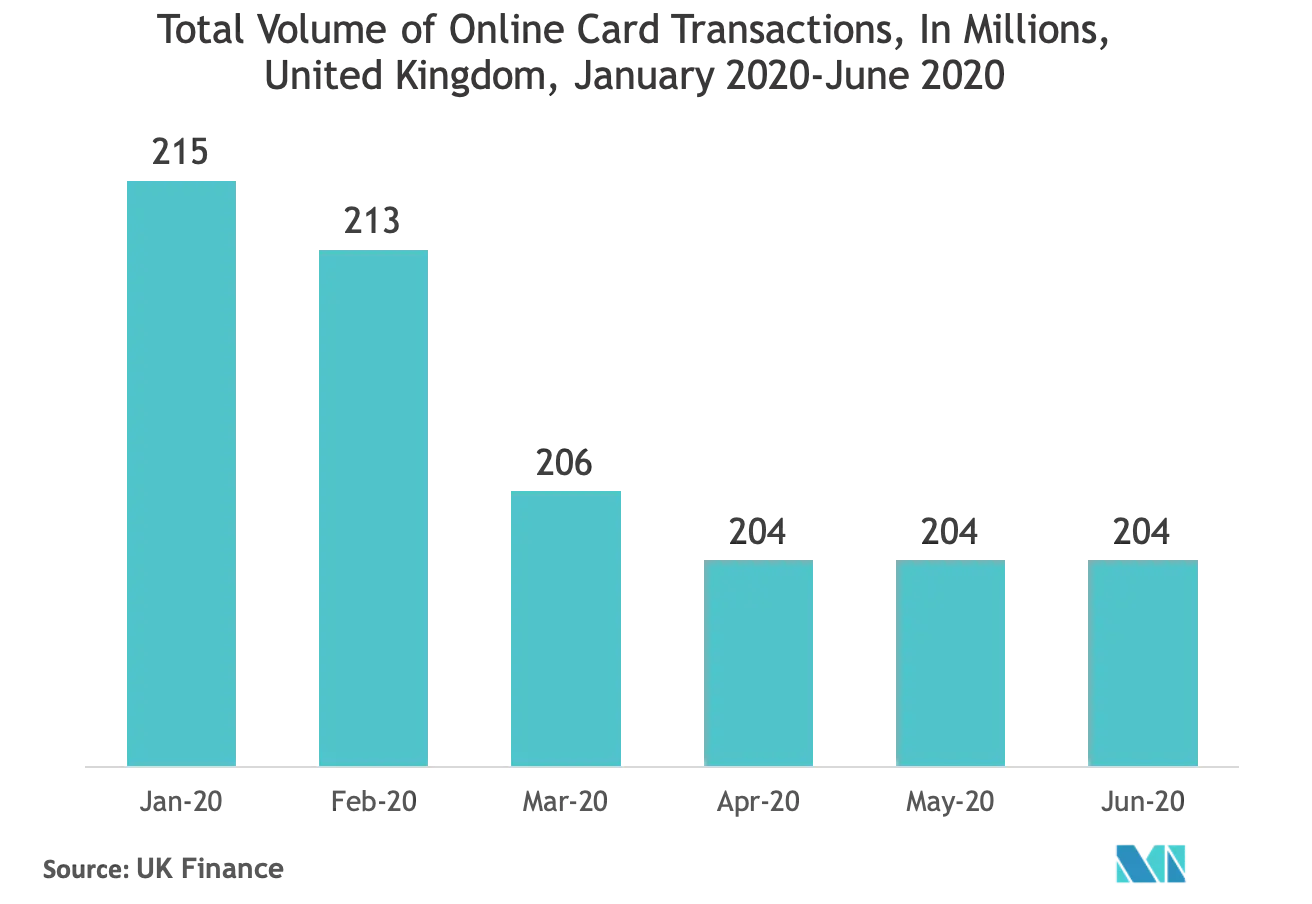Market Trends of Europe Fingerprint Sensor Industry
This section covers the major market trends shaping the Europe Fingerprint Sensor Market according to our research experts:
BFSI Industry is Expected to Drive the Market Growth
- In order to provide better safety over their transactions, several banking and financial institutions have shifted toward technologies that support them in this initiative, with fingerprint readers being one of them, in the United Kingdom. This is expected to boost the fingerprint sensors market in the region over the forecast period.
- For instance, in March 2019, the British bank, NatWest, started conducting trials to use a new NFC payment debit card, which is supported with a built-in fingerprint scanner. Some of the region's major players are entering into strategic partnerships that allow them to develop the technology further, thereby fueling the demand for technology in the market over the forecast period.
- Further, in 2019, The Royal Bank of Scotland (RBS) announced a pilot of payment cards emphasizing biometric fingerprint technology. The trial is being brought out with around 200 of the bank's NatWest customers and will take place in the United Kingdom. The fingerprint acts as a replacement for PIN entry and is used to verify transactions over EUR 30, making it quicker and easier for customers to complete their payments.
- These banks' successful deployment of payment cards has increased the focus of various banking organizations towards biometric payment cards. Further, according to Visa's survey, consumers are as likely to want to use fingerprint recognition for in-store scenarios as they are for online payment scenarios. Of all the biometric authentication techniques queried, fingerprint recognition ranked the highest in terms of desired payment authentication for in-store usage.

Germany Holds Significant Market Share
- Germany holds robust resources in fingerprint sensors domain, comprising technology and innovation expertise at Research and Technology Organizations (RTOs) and industrial competences at the application layer. In addition, the country is well placed on manufacturing advanced and innovative electronic products in low- or mid-volume segments, with extraordinary added value for end user's market segments.
- The payments industry in Germany is moving at a fast pace. Driven by pressure from major e-commerce and IT giants, like Google, Samsung, and Apple, financial institutions have been fervently pursuing standardization initiatives in a bid to improve services and assure central intermediation role in the payment's ecosystem. This is expected to boost the fingerprint sensors market, over the forecast period, in the region.
- The automotive sector of the region is home for major automotive manufacturers, which are likely to follow the automakers, like Hyundai, and include fingerprint sensors into their designs. In terms of production, Volkswagen Group, BMW, and Daimler alone produced 4.66 million vehicles in German factories in 2019. According to the data by the German Association of the Automotive Industry, VDA, the domestic auto market grew 5% in 2019, after buyers registered 3.6 million new cars. Considering such high volumes of production, fingerprint sensors' potential is likely to be high going forward.
- In Germany, a growing share of fingerprints' R&D resources has been realigned from capacitive sensors in mobiles to other technologies, one of which is in-display sensor technology. For instance, in the region, companies like Fingerprint Cards AB collaborated with key customers in the first half-year 2018 to continue developing this technology and bring it to the mass market.


